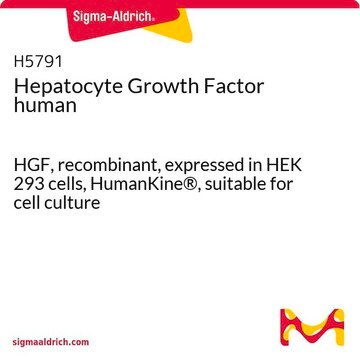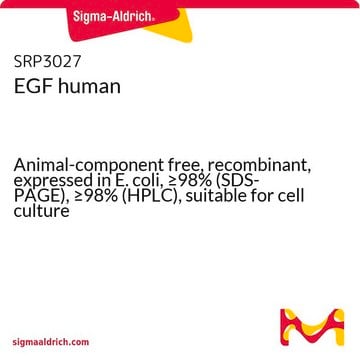G3046
GDF-15 human
Synonym(s):
Growth differentiation factor 15, MIC-1, Macrophage inhibitory cyotkine-1
About This Item
Recommended Products
biological source
human
Quality Level
recombinant
expressed in CHO cells
assay
>97% (visualized with silver stain, SDS-PAGE)
form
lyophilized powder
mol wt
dimer 13 kDa (based on N-terminal sequencing, starting at the first histidine of the 6X histidine tag)
technique(s)
cell culture | mammalian: suitable
impurities
endotoxin, tested
UniProt accession no.
storage temp.
−20°C
Gene Information
human ... GDF15(9518)
General description
Application
Biochem/physiol Actions
It has been discussed to serve as a secreted biomarker for activation of the p53 pathway in human cancer.
Physical form
Analysis Note
Storage Class
11 - Combustible Solids
wgk_germany
WGK 3
flash_point_f
Not applicable
flash_point_c
Not applicable
Certificates of Analysis (COA)
Search for Certificates of Analysis (COA) by entering the products Lot/Batch Number. Lot and Batch Numbers can be found on a product’s label following the words ‘Lot’ or ‘Batch’.
Already Own This Product?
Find documentation for the products that you have recently purchased in the Document Library.
Our team of scientists has experience in all areas of research including Life Science, Material Science, Chemical Synthesis, Chromatography, Analytical and many others.
Contact Technical Service








